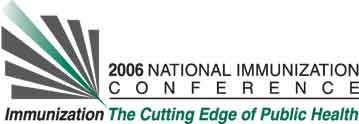Warren Williams, National Immunization Program, ISD, Centers for Disease Control and Prevention (CDC), Immunization Registry Support Branch - Informatics, 12 Corporate Square MS E-62, Atlanta, GA, USA, David Lyalin, CDC Information Technology Services (CITS) Contract / Northrop Grumman Co, David Lyalin Consulting, Inc, Koger Center/Harvard Building, 3375 NE Expressway, Atlanta, GA, USA, Therese Hoyle, Michigan Department of Community Health, Lansing, MI, USA, Katie Reed, Partners In Health Systems, PO Box 249, 5789 Widewaters Parkway, Dewitt, NY, USA, Kim Salisbury-Keith, Rhode Island Department of Health, 3 Capitol Hill, Providence, RI, USA, and Angel R. Aponte, Citywide Immunization Registry, New York City Department of Health, 2 Lafayette St., 19th Floor, New York, NY, USA.
Learning Objectives for this Presentation:
1. Understand how modern business engineering techniques can be applied to analysis and development of immunization registry processes and standards.
2. Define immunization statuses for a patient.
3. Identify the impact of immunization statuses assignment on reminder-recall notifications and immunization coverage assessments.
Background:
Inconsistent definition of a patient immunization status among immunization information systems (IIS) results in inaccurate/incomparable data. The Modeling of Immunization Registry Operations Workgroup of American Immunization Registry Association has been formed to develop an IIS “Best Practice” guidebook for registry functionality including patient immunization status.
Objectives:
Provide guidelines to encourage common practices for determining patient status in IIS operations, thus improving comparability, quality and usefulness of registry information.
Methods:
The workgroup conducted a two and a half days facilitated meeting and multiple pre- and post- meeting teleconferences complemented by extensive “off-line” work. The goal was to analyze existing practices and formulate consensus-based recommendations for management of patient immunization statuses. This includes classifications of active and inactive conditions. The workgroup utilized business engineering techniques and notations that applied the Unified Modeling Language.
Results:
• Developed a principle that patient's statuses should be defined and maintained on provider and geographic jurisdiction levels, based on the responsibility for a patient.
• Defined events, conditions, and business rules that lead to transition between these statuses.
• Developed decision tables that establish cause-effect relationships between patient statuses and reminder/recall actions and immunization coverage assessments.
Conclusions:
The workgroup developed recommendations for definitions and assignments of patient immunization statuses for use at the Provider (health-care) and Geographic Jurisdiction (public health) levels of responsibility. These recommendations were also analyzed in the context of reminder/recall procedures and immunization coverage assessments. Business modeling techniques enabled development of common approaches and consensus in immunization registry programs.
See more of Managing Immunization Information Systems Data Quality: Developing Models and Practices
See more of The 40th National Immunization Conference (NIC)

